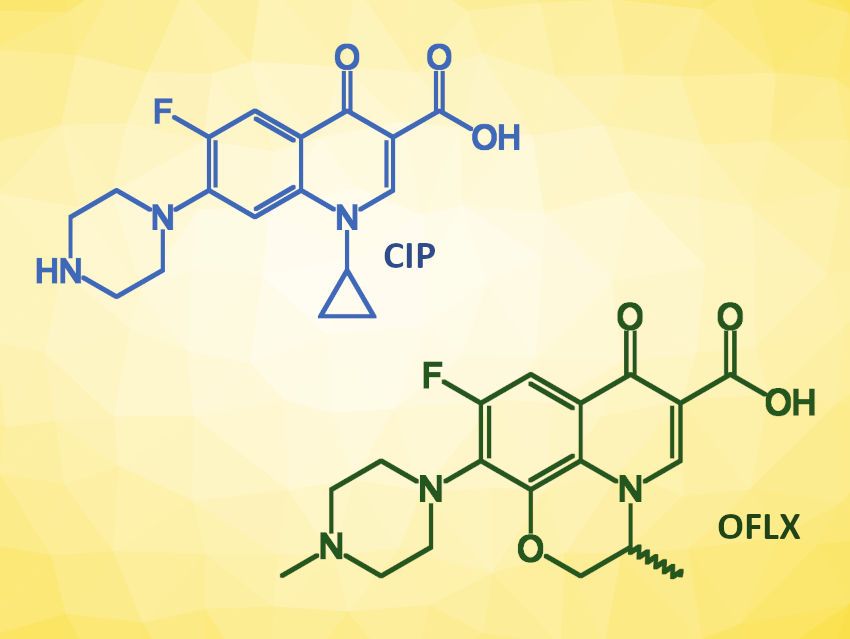Fluoroquinolone antibiotics, such as ciprofloxacin (CIP, pictured) and ofloxacin (OFLX, pictured), are widely used in humans and animals. While these drugs are important for the treatment of diseases, their widespread use also leads to the accumulation of antibiotic residues in the environment. This can have harmful effects, e.g., promoting the development of antibiotic resistances and negatively affecting aquatic ecosystems. Methods that can detect residues of these antibiotics in water are, thus, useful.
Zhiliang Liu, Inner Mongolia University, Hohhot, and colleagues have developed a fluorescent europium-based metal–organic framework (MOF) that is stable in aqueous solutions and can be used as a highly sensitive sensor for the detection of CIP and OFLX residues. The team synthesized the MOF from EuCl3·6H2O and 5-(1H-pyrazol-3-yl)isophthalic acid) (H2PIA). They found that the resulting MOF is stable in water for at least 15 days and also thermally stable in the solid state.
The Eu-based MOF fluoresces red under UV light. In the presence of the antibiotics CIP or OFLX, a color transition takes place—from red to blue for CIP and from red to green for OFLX. This color transition can be detected with the naked eye. These color changes are easily distinguishable from the fluorescence quenching effects that other types of antibiotics have on the MOF. The approach provides a low detection limit, a broad detection range, and a rapid response time.
- Stable Europium-based Metal–Organic Frameworks for Naked-eye Ultrasensitive Detecting Fluoroquinolones Antibiotics,
Jiannan Xiao, Meiying Liu, Fuli Tian, Zhiliang Liu,
Inorg. Chem. 2021.
https://doi.org/10.1021/acs.inorgchem.1c00263




